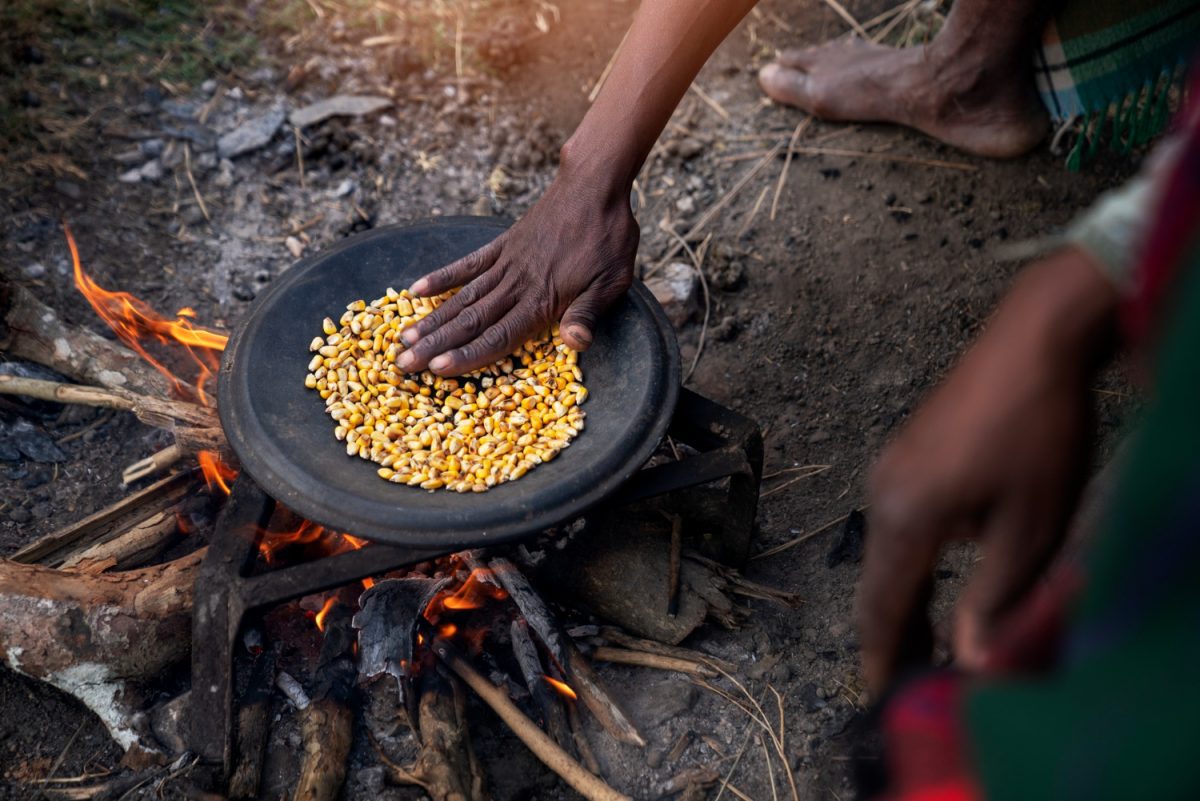High Global Food Prices Could Lead To Worldwide Nutrition Crisis

The high global food prices in the 21st century is causing concern about the potential for a global nutrition crisis. A study of over 1.27 million children in 44 low and middle-income countries found that exposure to food inflation during pregnancy and early childhood is associated with a higher risk of child wasting in the short term and stunting in the long term.
Poor and landless rural households are particularly at risk for child wasting due to food inflation. These findings emphasize the importance of policies that improve maternal and young child nutrition and address food price volatility and access to nutritious foods.
Food prices have been highly volatile in recent years, with three international price spikes occurring in the past 15 years, including the current COVID-19 pandemic and the invasion of Ukraine. Domestic food inflation in low and middle-income countries remains high, with countries facing economic issues, conflict, or poor governance being particularly affected.
The negative impacts of food price crises on nutrition are particularly concerning given their frequency and increasing intensity in the 21st century. The UN Food and Agriculture Organization’s international food price index reached an all-time high in March 2022, 116% higher than its 2000 value. This is higher than even the peak of the 2007-2008 crisis.
While international prices have recently decreased, domestic food inflation in low and middle-income countries remains high by historical standards, particularly in countries facing economic mismanagement, conflict, or poor governance. It is crucial to address these food price crises and their effects on nutrition, particularly for vulnerable populations such as poor and landless rural households and young children.
Image Source: IPFRI Blog
The impact of Inflation
International food price increases pose a threat to the welfare of the poor, particularly in light of the severe impacts of COVID-19 on poverty and malnutrition. Simulation models from the International Food Policy Research Institute (IFPRI) suggest that increases in food, fuel, and fertilizer prices are linked to short-term increases in poverty, even if rural economies may benefit from higher prices in the long run. However, little is known about the effects of food inflation on child nutrition in the short or long term.
Optimal maternal nutrition during pregnancy and proper child-feeding practices in early life are crucial for promoting development and protecting health and nutrition at all stages of life. Therefore, as food prices rise and households’ access to nutritious foods and healthy diets decreases, it is a major concern that the nutrition of pregnant and lactating women and their young infants, who have high nutrient requirements, may suffer the most.
A study using data from 130 Demographic Health Surveys in 44 low and middle-income countries found that food inflation is associated with higher risks of wasting and severe wasting in children, particularly in infants under 5 months of age, potentially due to a maternal nutrition pathway during pregnancy. Food inflation was also linked to poor dietary diversity in children aged 6-23 months, suggesting an additional postnatal pathway.
For stunting, a measure of long-term or chronic malnutrition, we test the effects of food price changes in the year before measurement. Those predicted risks are shown in Figure 3 for all stunting (in black) and severe stunting (in blue), by child age. Food inflation is again associated with higher risks for stunting and severe stunting, and the effect size is large and robust across ages. Across all children 0-59 months of age, a 5% increase in the real price of food is associated with a 7% higher risk of stunting and a 10% higher risk of severe stunting.
These results demonstrate the negative impacts of food inflation on child nutrition, particularly for wasting in the short term and stunting in the long term. They also highlight the importance of addressing food price volatility and improving access to nutritious foods in order to protect the nutrition of vulnerable populations such as pregnant and lactating women and young children. It is crucial to implement policies focused on improving maternal and young child nutrition, as well as broader actions to reduce food price volatility and increase access to nutritious foods.

Image Source: IPFRI Blog
Which groups are most vulnerable to the negative impacts of food inflation?
Previous research has shown that poor, rural, and landless households are often more vulnerable to inflation shocks, while male infants are more vulnerable to shocks than females according to nutrition-focused studies. The current study also found that male children, rural children, and children from asset-poor and landless households are at higher risk for wasting due to food inflation, particularly for male children and children from asset-poor and landless households. These findings demonstrate the disproportionate impact of food inflation on vulnerable populations and the need for targeted policies to protect their nutrition.
The long-term effects of short-term economic shocks on nutrition
Even brief periods of poor nutrition can have lasting impacts on child growth and development, particularly during the first 1000 days of life when the foundations for optimal nutrition, health, and development are established. The study found that price increases during pregnancy and the first year of life were linked to a higher risk of stunting at age 3-5 years, with stronger effects for severe stunting. These results show the significant and long-lasting consequences of nutritional insults during critical periods of development.
Image Source: IPFRI Blog

Image Source: IPFRI Blog
Policies and programs to protect young children and mothers
IFPRI’S study suggested some implications. The impacts of food inflation on nutrition during the critical period of the first 1000 days of life, including pregnancy and infancy, and the disproportionate impact on poor and landless rural households highlight the urgent need for policies and programs to protect these vulnerable populations.
The IFPRI’s study suggested that Maternal and child food or cash transfers, possibly with health and nutrition-related conditions, can provide protection throughout the first 1000 days and beyond, particularly if they are targeted at the poorest groups and combined with nutrition and health-focused social behavior change communication and adjusted for inflation.
The publication suggested that investing in multi-dimensional early warning systems and programs to prevent and manage severe acute malnutrition is also important in an era of increased food price volatility and extreme weather events. Additionally, food policies should aim to stabilize food prices and increase the affordability of nutritious foods.
The study recommended the following scaling up investments in climate-smart and nutrition-smart agricultural research and development, implementing new approaches to grain reserves, more closely regulating biofuels policies, reforming trade to prevent export restrictions, and adapting and making social protection programs more nutrition-sensitive to protect the incomes and diets of high-risk populations. closely regulating biofuels policies, reforming trade to prevent export restrictions, and adapting and making social protection programs more nutrition-sensitive to protect the incomes and diets of high-risk populations.
Read full article on IFPRI’s Blog



